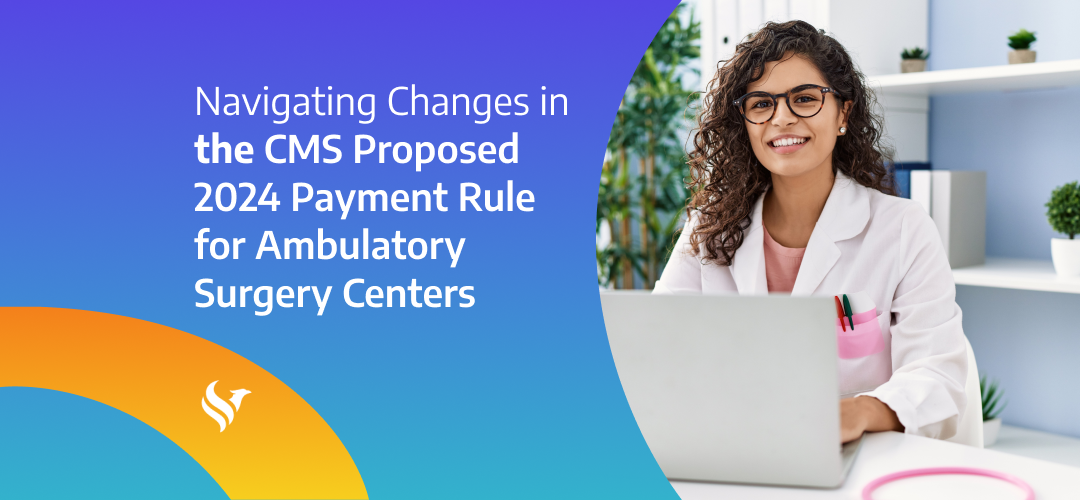The Good
👍 Continued the alignment of ASC Update Factor using the hospital market basket until 2025. This alignment will extend the five-year interim period an additional two calendar years through 2025. The goal is to create consistency in payment updates across different healthcare settings. This can be interpreted as CMS’s recognition of the value and quality of services provided by ASCs. As a result, ASCs would see, on average, an effective update of 2.8 percent over all covered procedures. This is a combination of a 3.0 percent inflation update (based on the hospital market basket) and a productivity reduction mandated by the Affordable Care Act of 0.2 percentage points. This is an average. Some updates might vary significantly by code and specialty.
👍 ASC-11 Cataracts Visual Functions – Although the measure will remain voluntary, CMS’s proposal to specify assessment tools used pre and post-surgery. They hope this will promote standardized patient care and improve overall outcomes. They propose also allowing the center to administer the assessment tool themselves and not rely on the physicians’ offices to provide the data. ASCs should weigh the benefits of adhering to these guidelines against the additional administrative work required.
👍 It is proposed that ASC-9 Endoscopy/Polyp Surveillance be modified by changing the denominator from 50 to 45 years to old to align with current clinical guidelines as it may improve early detection of colon issues. ASCs should consider the implications of these changes on their patient populations and resources.
The Bad
👎 Limited Addition of Procedure Codes: Despite several requests from ASCs, CMS has added only one of the sixty-three requested codes, G0330 Dental rehabilitation, to the list of procedures being performed safely in ASCs on non-Medicare patients. This limited inclusion is a huge disappointment for ASCs, as it restricts their ability to offer a broader range of services to patients and limits revenue opportunities and an even more significant misstep by CMS as moving procedures that have a proven track record of safe, less expensive, high-quality care in the ASC setting has saved millions of dollars in total knee and total hip replacements alone.
👎 Unfortunately, CMS has proposed to continue requiring the reporting of ASC-20: COVID-19 Vaccination Coverage Among Health Care Personnel – While maintaining this measure showcases CMS’s commitment to combating the pandemic, ASCs continue to face challenges in tracking and reporting vaccination data. However, if they consider a less rigorous timeframe for compliance, it may help ease the burden for centers.
The Mixed
ASC Quality Reporting (ASCQR) Program: CMS has proposed some changes to the ASCQR Program, which includes both encouraging and concerning elements.
🔄 CMS proposes reintroducing ASC-7: ASC Facility Volume Data with voluntary collection starting in 2025; this measure can provide valuable insights into surgical procedure volume in ASCs. However, ASCs must carefully evaluate this change’s implementation and potential reporting burden.
🔄 CMS has proposed a new measure, ASC-21: Risk-Standardized Patient-Reported Outcome-Based Performance Measure (PRO-PM) – This measure could be valuable in documenting the quality of care offered at ASCs by measuring the outcomes after elective primary total hip arthroplasty and/or total knee arthroplasty. Voluntary reporting would begin in 2025. ASCs should be prepared to invest in data collection and analysis and may even need an outside vendor to collect this data. The work involved and the potential cost of implementing this measure, along with the mandatory collection of OAS CAHPS, may overburden centers.
CMS’s proposed changes for ASCs reflect its ongoing commitment to enhancing the healthcare landscape. The alignment of ASC update factors and the increase in reimbursement rates are high points that can promote financial stability and quality care delivery in ASCs. However, the limited addition of procedure codes and the various modifications in the ASCQR Program introduces both opportunities and challenges for ASCs.
As these changes are being considered, it is vital for ASCs to actively participate in the public comment process, providing constructive feedback and sharing their concerns. By doing so, ASCs can hopefully influence policy decisions, ensuring that CMS regulations strike a balance between improving healthcare outcomes and addressing the practicalities faced by ASCs in implementing these changes. In this ever-evolving healthcare landscape, the collaboration between CMS and ASCs is crucial to create a sustainable and patient-centered future for ambulatory surgical care. All comments must be made either via the https://www.regulations.gov/document/CMS-2023-0120-0001 website. Public comments are due by Sept 11, 2023.
Don’t miss out on the good stuff – Subscribe to HST’s Blog & Podcast!
Every month we’ll email you our newest podcast episodes and articles. No fluff – just helpful content delivered right to your inbox.
